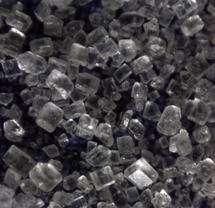Shape-shifting sugars pinned down

(PhysOrg.com) -- Oxford University scientists have solved a 50-year-old puzzle about how, why or indeed if, sugar molecules change their shape.
Sugar molecules have long been known to adopt chemically unusual shapes but some scientists attributed this to the presence and influence of water or other substances. To test this theory, the Oxford researchers found a way of isolating the sugars from all other substances – by turning them into a gas - and then a method of monitoring their behaviour.
Their study, published in this week’s issue of the journal Nature, reveals that the molecules maintained their unusual chemical appearance despite their isolation. The discovery could have implications for medicine but perhaps more readily for the manufacture of products currently reliant on waning supplies of oil.
Sugars are the most abundant organic molecules in the world.
Their metamorphosis was acknowledged by scientists in 1955 and the phenomenon named the anomeric effect. This was because of the unusual shape around the carbon atoms of sugar molecules and to one carbon atom in particular called the anomeric centre.
‘Sugars are weird,’ Professor Ben Davis of Oxford’s Department of Chemistry, says. ‘The anomeric effect is fundamental to organic chemistry but until now, our understanding of it has been fairly limited. If sugars didn’t change shape, life would be radically different and some, perhaps many, biological processes just wouldn’t work anymore.’
To prove the anomeric effect existed, Professor Davis and his team of sugar chemists at Oxford worked with another Oxford research group lead by Professor John Simons, a co-author of the paper.
They isolated sugar molecules from all other substances. ‘We still saw the sugars’ unusual shape. Our results also support the idea that changes in groups attached to the sugars can moderate this effect.
‘This is a fundamental discovery and, because it applies to all sugars, could have very far reaching consequences.’
Chemicals can be built from sugar molecules and their availability is much greater than that of oil. Sugars are common in human diets but also make up plant and insect cells in the form of cellulose and chitin respectively.
‘Sugars could well be the future of making things,’ Professor Davis says. ‘We’re much less likely to run out of sugars and it might be possible to replace oil in the manufacture of, say, plastics or drugs with sugars. In principle, chemists can make almost any organic molecule and so anything you can make from oil you should be able to make from sugars.’
The implications for medicine could be equally significant but will need much additional research. Much less is understood about sugars than other molecules such as DNA and proteins. ‘Translating sugar biology into medicine is the last frontier of biology,’ Professor Davis says, ‘but the rewards if we do could be huge.’
Provided by Oxford University



















